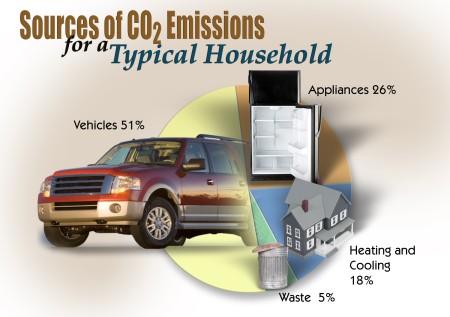Sign up for daily news updates from CleanTechnica on email. Or follow us on Google News!
Climate activists like us are informed about the world’s necessary transition to clean energy sources. We’re confident that renewables will provide us with ample clean power as systemic change occurs. It’s much harder to wrap our heads around the concept of a sustainable global food system, however. That metamorphosis would require a confluence of elements — equitable subsistence access, cross-cultural nutritional options, affordable food sources — and an agricultural food system that did not eradicate ecosystems, pollute environments, or contaminate the atmosphere.
 Chip in a few dollars a month to help support independent cleantech coverage that helps to accelerate the cleantech revolution!
Chip in a few dollars a month to help support independent cleantech coverage that helps to accelerate the cleantech revolution!
The contemporary food system has been carefully cultivated for taste and convenience. What had been exotic food luxuries in many of our childhoods are now commonplace product staples. If I want to find mirin for my favorite San-J low-sodium, gluten-free, vegan, and kosher recipe, I fully expect to find it at a local grocery. Also, I’d assume I could pick up some organic or heirloom produce at the same time. If any of those items weren’t available, I’m pretty sure I’d be doing some indignant eye-rolling. 🙂
The translation from bountiful and disparate rows of food choices to what Cornell agricultural economist Chris Barrett tells the New York Times is a “food polycrisis” seems almost too abstract to be digested. Yet the last decade ceased to deliver reliable global patterns of year-on-year improvements in hunger, Barrett says. US investment in agricultural research and development has fallen by almost a third in this young century, and “the failure to invest in improving agricultural productivity, especially of healthier foods, basically traces to complacency,” Barrett insists.
Agricultural research and development spending would need to at least triple to keep pace with booming demand. That innovation isn’t on track to keep pace with climate change; over a 30-year time horizon, the insurer Lloyd’s recently estimated a 50% chance of what it called a major global food shock.
A few years ago, it was possible to imagine a long list of solutions that both addressed the problem of emissions from food production and pivoted away from industrial agriculture. What happened?
- Sequestering carbon in soil has proven trickier than advocates expected.
- No-till, climate-smart regenerative farming practices now seem less like miracle cures.
- Vertical farming has experienced only stunted growth, partially due to its huge energy demands.
- Genetically modified varietals could fill in gaps, but they’re unpopular or sometimes illegal in many parts of the world.
Global Challenges to Food Security
We can start at the domestic level in order to make meaning about what is likely to blow up into a food system crisis.
Obesity has continued to rise, and the average micronutrient content of dozens of popular vegetables has fallen. Most US farms lose money, yet more than half of US land is used for agricultural production. In fact, more than one-third of the planet’s land is used to produce food, and 70% of all fresh water is used to irrigate farmland.
One in eight US residents is food insecure, according to the US Department of Agriculture. “But it doesn’t have to be this way. No one should know hunger,” says US Representative Ayanna Pressley. “It is a humanitarian crisis, it is a moral failing, and it is a policy choice.”
Scientists estimate that the impact of a switch to a plant-based diet could significantly cut emissions and provide half of the emissions reductions needed to keep the planet from warming by more than two degrees. Even with that knowledge, trends toward vegetarianism and veganism haven’t risen, but per capita consumption of meat in the US and the UK has grown dramatically over the last 50 years.
The food system has been disrupted in recent years by the Covid-19 pandemic, regional conflicts, and climate change. Global hunger levels have failed to decrease for three consecutive years, with about 1 in every 11 people hungry in 2023. According to the World Food Program, 282 million people in 59 countries went hungry last year, 24 million more than in 2022. And global food scarcity is driving record levels of human displacement and migration.
About three-quarters of all global agricultural land is vulnerable to substantial climate disruptions, NASA’s Jonas Jägermeyr says, “so mostly everywhere you look, things will change in one way or the other.” And that probably means the food you’re eating, too, is in jeopardy, as climate threats bode large in years to come. Even where politics are relatively stable, market incentives are often perverse, infrastructure is often insufficient, and support systems are lacking for smallholder farmers trying to innovate their way toward greater crop stability and abundance.
Jägermeyr of NASA calls the challenge to provide sustainable food “the challenge of our generation.” We need to save the food system from what he calls a “quadruple squeeze.”
- The problem of productivity and hunger — agricultural yields are still growing, but not as quickly as they used to and not as quickly as demand is booming
- The risk to ecosystems, under threat from fertilizer runoff deforestation and other pollution
- The challenge of nutritional deficiency, as those foods we are growing more of are generally getting worse for us over time — rates of undernourishment have grown 21% since 2017
- Climate — the effects of climate change have reduced the growth of overall global agricultural productivity by between 30% and 35%.
These factors, he says, are driving a “fundamental change across most breadbaskets on the planet. It’s pretty complicated. And the scary part is that we have to solve them all.”
The climate crisis particularly affects food quantity, quality and accessibility and is typified by changes in frequency, intensity, or duration of extreme weather events. “For policymakers, it is important to understand where the vulnerabilities are in different systems and how they are interconnected,” Ramya Ambikapathi, senior research associate in global development at Cornell College of Agriculture and Life Sciences, told the advocacy group Food Tank.
The Future of Food Systems May Look Different than We Expect
The pressure on the present food system is not a sign that it will necessarily fail, only that it must change. Even if that progress does come to pass, securing a stable and plentiful future for food on a much warmer planet will require disruption. But disruption is only a portion of the entire problem. Adaptation and innovation will transform the global food supply, too. Diets will shift, as will the farmland currently producing staple crops — corn, wheat, soy, rice. More hazards are sure to follow, which will reinvent the entire food system as we know it.
The world may need to add the equivalent of two Indias to the world’s existing farmland to meet food needs in the second half of this century, according to the World Resources Institute. Yet adding that farmland means cutting down forests, which store carbon, in order to graze more animals, which produce carbon.
But all is not lost. Economist Barrett sees plenty of promise on the horizon now: biofortified crops; new techniques to fix nitrogen from the air, limiting the use of fossil-fuel based fertilizer; resilient varieties, like flood-resistant rice, that are already transforming the paddies of South Asia.
Instead of one quick fix, though, we must accept that a whole bunch of tools in our food system toolkit are necessary to keep the world eating adequately and in pursuit of good health.
Have a tip for CleanTechnica? Want to advertise? Want to suggest a guest for our CleanTech Talk podcast? Contact us here.
Latest CleanTechnica.TV Videos
CleanTechnica uses affiliate links. See our policy here.
CleanTechnica’s Comment Policy





